Before we headed to celebrate the Day of the Great Country of Convict Descent we stopped by the Ara Güller exhibition in the Willy-Brandt Haus in Kreuzberg.


Before we headed to celebrate the Day of the Great Country of Convict Descent we stopped by the Ara Güller exhibition in the Willy-Brandt Haus in Kreuzberg.

Let me introduce to you my friend Simon. Simon uses a picture thing to put the images of the world into it and then he puts some of them on the internet. Simon is a photographer.

We soon realised, that we won’t get to the good places on foot or by just relying on public transport. I stumbled across a website on the interwebs promising a bike tour for „Derry Day Trippers“. It sounded just right for us, inexperienced tourists, a simple day tour on bikes to see Ireland’s most northern point. Some 40 km of flat lands. Or so we thought.
Day three of our infamous weekend trip to the danish capital!
We recall: Doro and I flew to Copenhagen to meet Katja to look at a number of buildings conveniently placed together to house a mass of people that live together and proclaim their settlement as a capital of a land mass limited by invisible borders.
The third day started with a nice breakfast provided by the generous Katja. We had fruits. We hade vegetables. We had bread. And stuff.

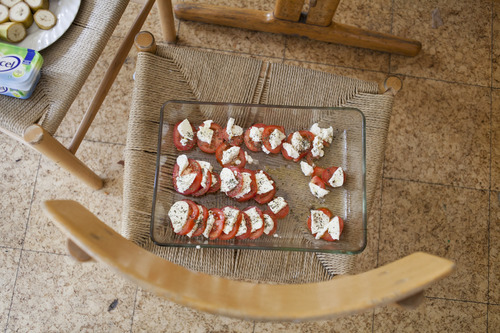
If this arouses you, you not only have a problem, you’re also lucky to get more food porn later in this post.
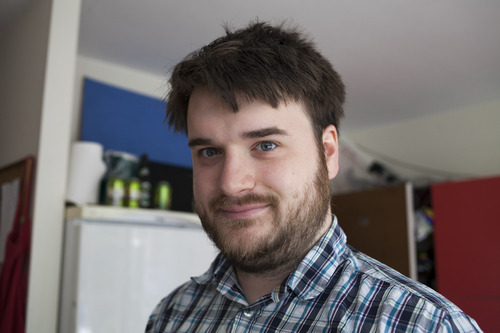
Ewww, who let this in?
Off we went, to see some part of the city, that is not that much overrun by tourists. We wanted to be the only tourists, the two to rule them all.
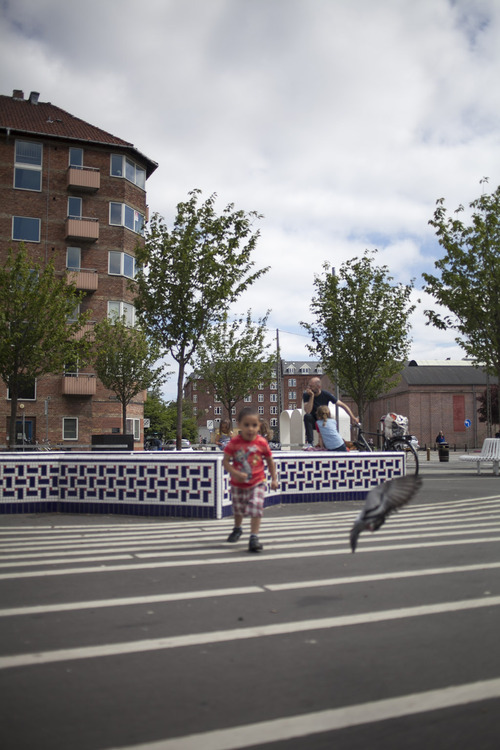
We started in an area that featured several nice large places, each themed differently, but all provided some recreational facilities for the local people. The first place was called “The black Place” which described it pretty well. The only better name would have been “The black place with white lines, a small hill and some barbecue places. Oh and Chess sets”. This is a bit long, but forms the nice acronym TBPWWLASHASBPOACS. Much better.
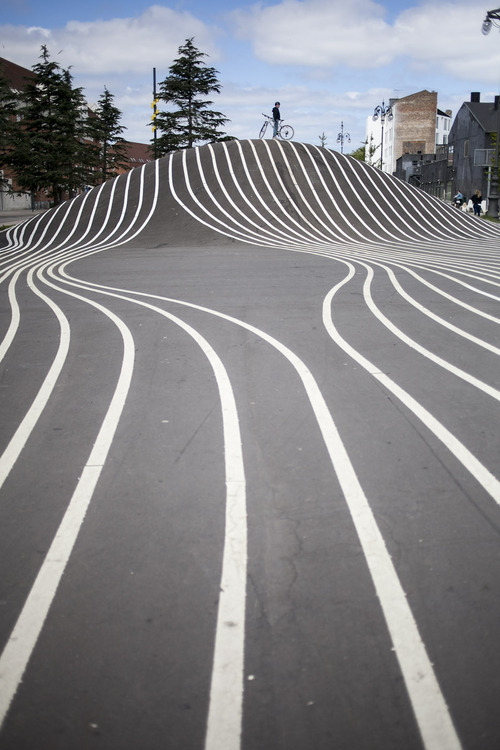
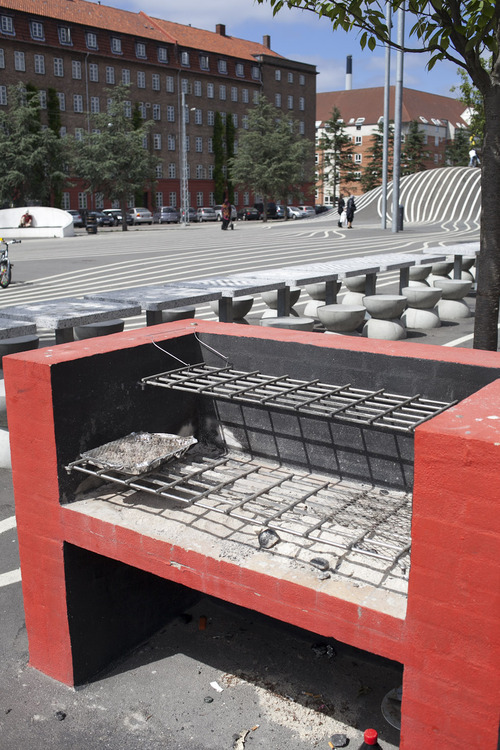
The next place was red. Fittingly, it had some Cyrillic lettering, a sparring ring, some other sporting sport stuff sports, and swings. It was fairly crowded, so I guess the danish people do not miss any grass, as Doro was pointing out. The whole area was mostly covered in concrete. Good for skating. Not so good for sand castles. 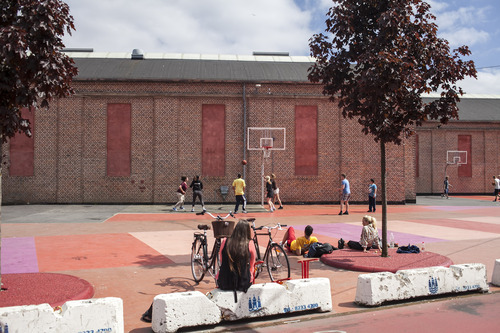
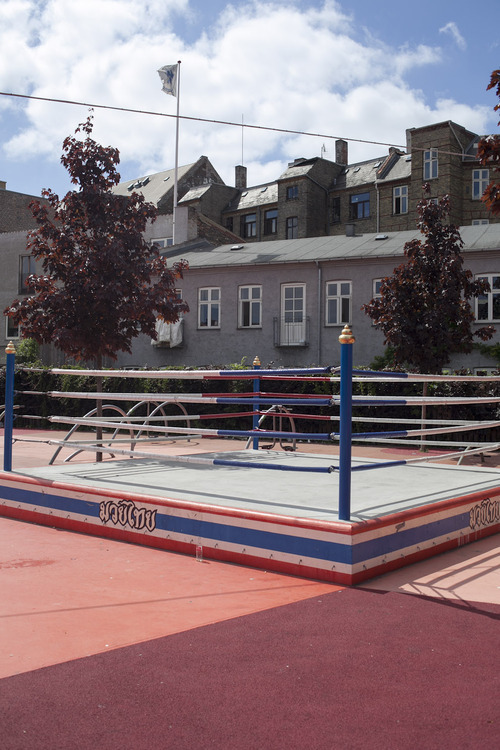
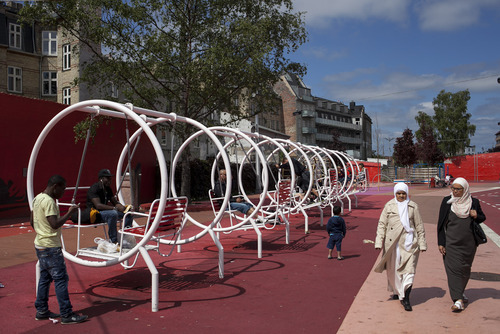
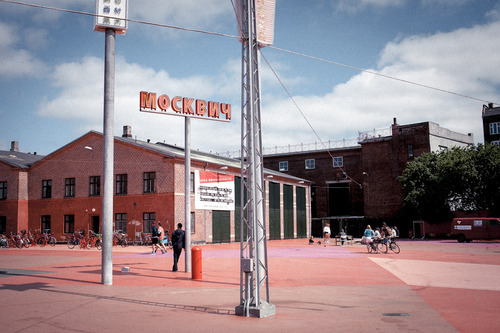
I messed around with this one to edit it to a more russian look. I doubt that I succeeded.

Skate parks!
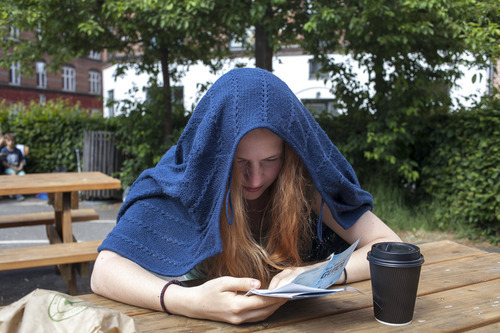
Katja, hiding from the vicious sun (that is the yellow ball hiding behind the grey clouds, in case you live in Berlin)
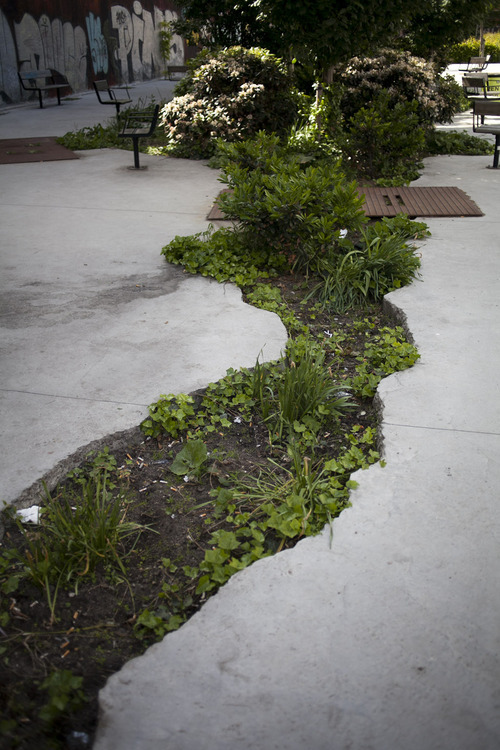
They let nature destroy perfectly good concrete. Fools.
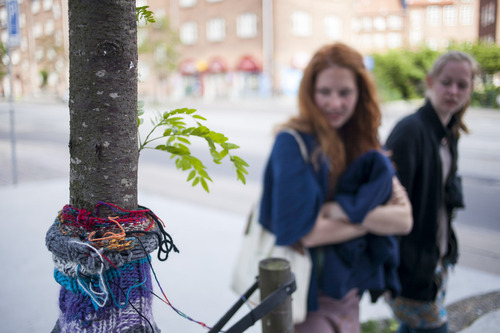
During winter it gets so cold, that danish people have to knit protection for trees.
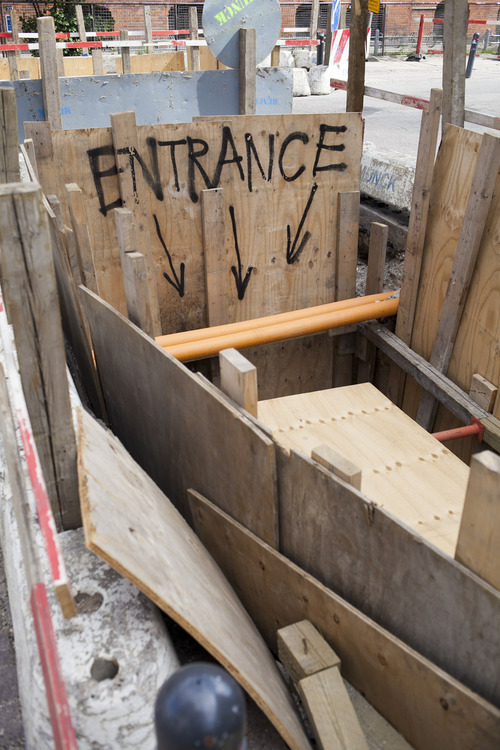
This is so underground.
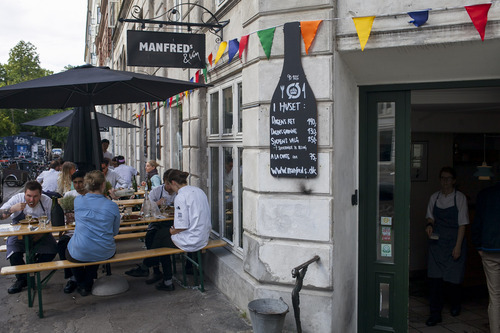
This was in small street that featured several nice restaurants and small shops. This specific one had about a dozen people in chef outfits sitting and dining. And it smelled incredibly good there.
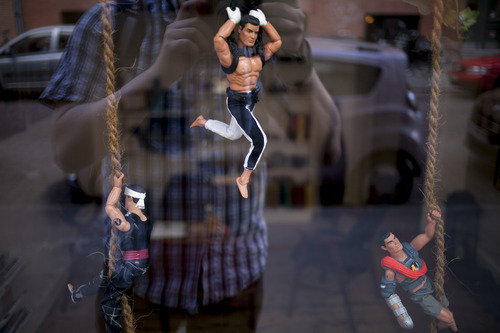
There is no way a shop window could be better decorated than with a bunch of action man figurines.
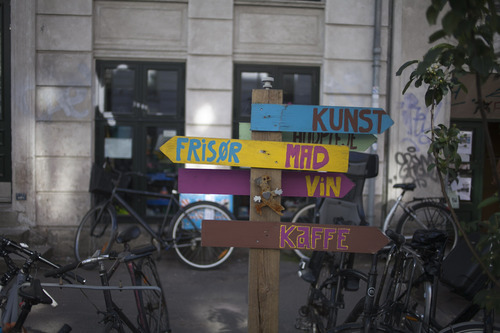
A sign in the small street. Everything you could ever want is there.
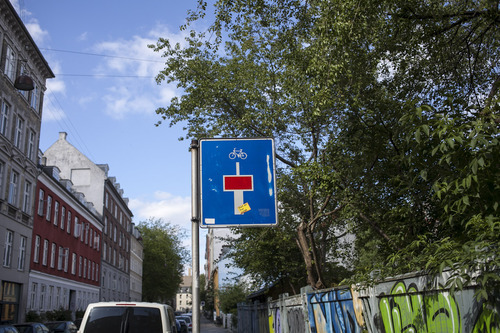
This is the national flag.
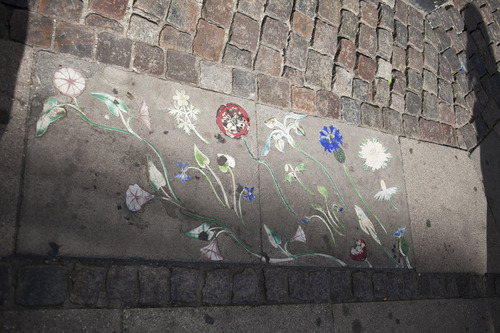
Street art!
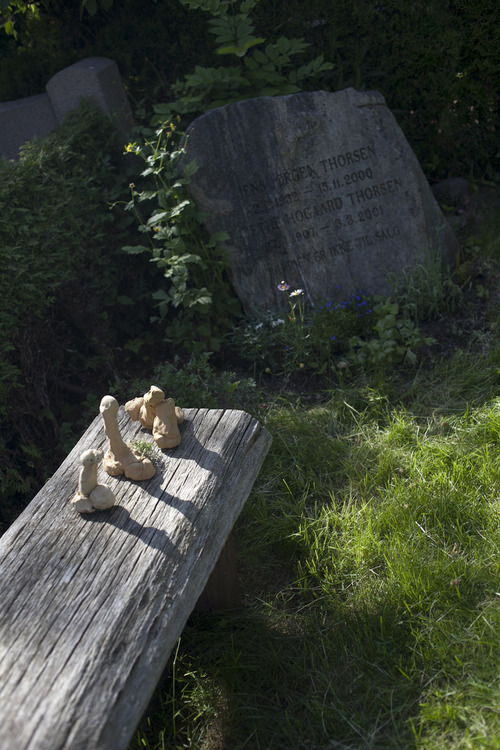
Near the center is a nice park, that only at second glance is in fact a graveyard. People are picnicking, walking their dogs and taking sunbaths on top or near the graves. The grave culture is also quite different. Having a set of clay penises on your grave is just as normal as laminated photos of the deceased and large columns. And we saw Hans Christian Anderesen’s grave. It was made of stone.
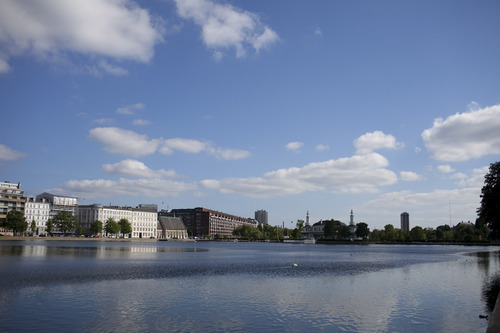
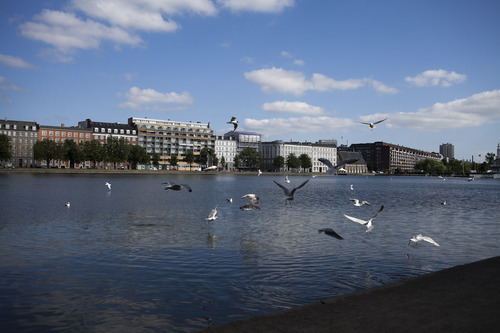
See? Gulls!
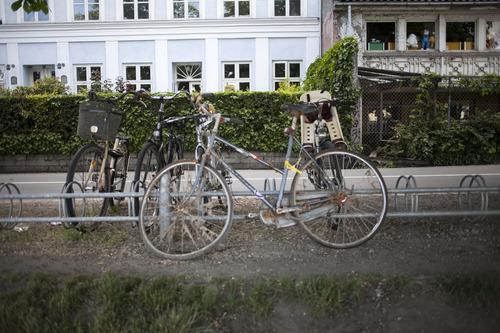
The bike is dead, jim.

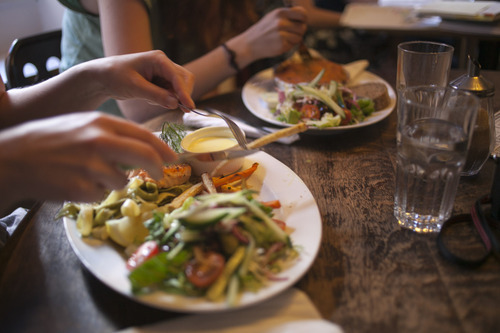
Food porn. Finally. I’ll give you a minute.
…
Done? Good.
This was at the place we stayed the day before, the bookshop/library/bar/restaurant/working space. Really good salmon, smorebrod and eating stuff to eat.
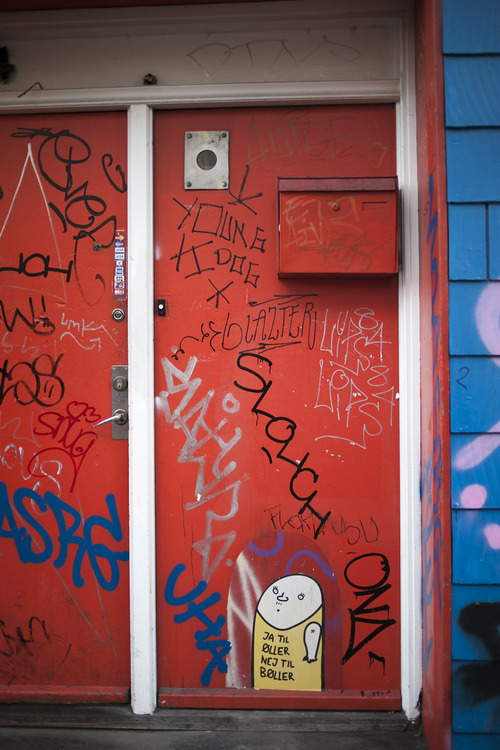

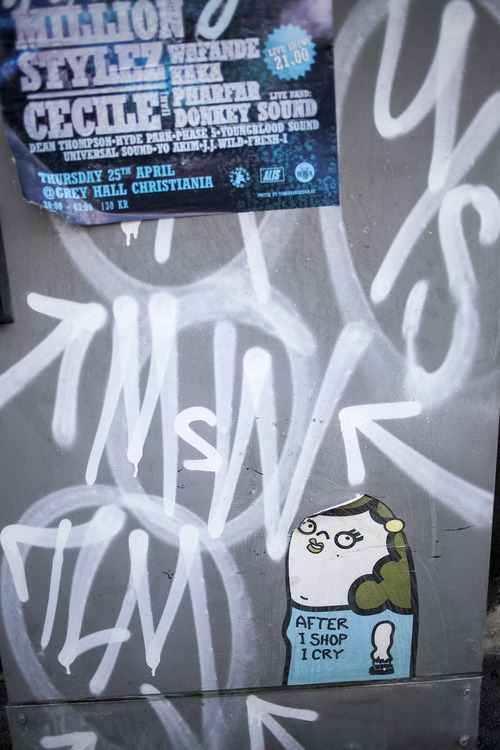
We made again some good mileage that day. It was a nice day. It was our last day with Katja as she left for Amsterdam.
Little did I know what happened the next day.
After my first rangefinder last time I now present my first (kind of) analog SLR, property of my mother-in-law. It is a Canon AE-1 Programm, one of Canon’s first SLR with the FD mount and automatic light metering through the lens.
The most intriguing thing is its shutter sound. The focal plane shutter emits a squeaking sound each time it is released as it was close to its death. When using it for the first time I feared it will die in my hands but up to today and several dozen rolls of film later it still works accurately and still sounds like a stepped on mouse.
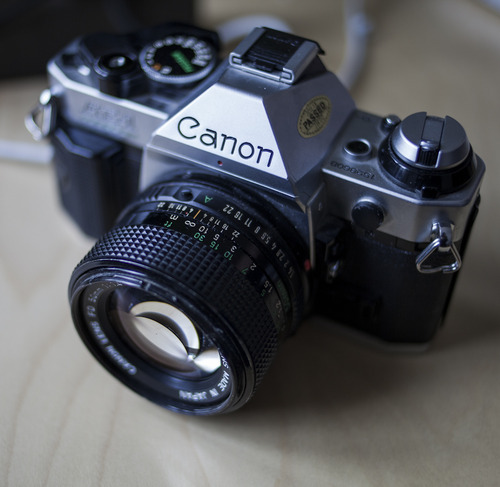
The lens I use is a Canon FD 50/1.4 I got on ebay for 15 EUR. It is quite worn on the outside, but the glass is still fine. I enjoy its sharpness and honestly prefer it over the new EOS 50/1.4.
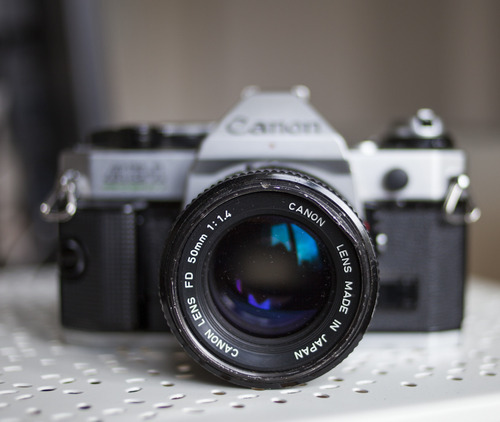
The whole set is quite heavy as most of the camera is made of metal. Its film winder isn’t the most comfortable one, especially when it is used to hold the camera in one hand without any strap like I hold any smaller camera. It can get quite hard to carry it around a whole day. But when it comes to shooting it is well balanced. The viewfinder shows only the set aperture measured by the light meter. The camera uses an automatic program that would be called Tv in a modern EOS, you select the shutter speed, set the lens to auto and adjust the speed to match your preferences, basically as on the canonet.
The microprism screen to focus works well but is not as fast as any good rangefinder, of course. But it works a lot better than any manual focusing on a digital camera.
When taking this one for a walk I spent the day with my girlfriend and her father who came to visit us. So it is mostly random street stuff from around Mitte and Prenzlauer Berg. As I didn’t shoot the whole film that day I also included one photo of Golm. 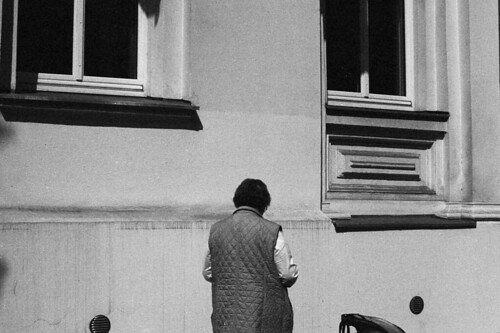
Instead of building a PC/Hackintosh my plans for the weekend were to start a new little project for my own pleasure.
I (together with my girlfriend) own too many cameras. I got about one for each system, starting from a Holga over (D)SLRs to giant mid format cameras. And I mostly use my Leica M4 and most of the time ignore the great capabilities of the other cameras. That’s why I decided to get one camera at a time, pop a fresh film into it and take it for a walk.
Last weekend I took my first rangefinder camera, the Canonet GIII QL19. The camera is a sibling of the better known QL17. Apart from smaller details they are mostly identical, one featuring a 40/1.7 and the other a 45/1.9 lens. The QL19 dates from around mid to end sixties. Back in the days single lens reflex cameras were rare and expensive and most everyday photography was done on point and shoots or rangefinder compact cameras like the QL19. But with the rise of cheaper SLRs with more automatic functions for exposure and later focus and film transport the rangefinder cameras vanished from the mainstream market and become more relevant for professional and semi pro users, that used Leica or Voigtländer systems among others.
Here is my girl “Canonette” QL19, with some wear to it.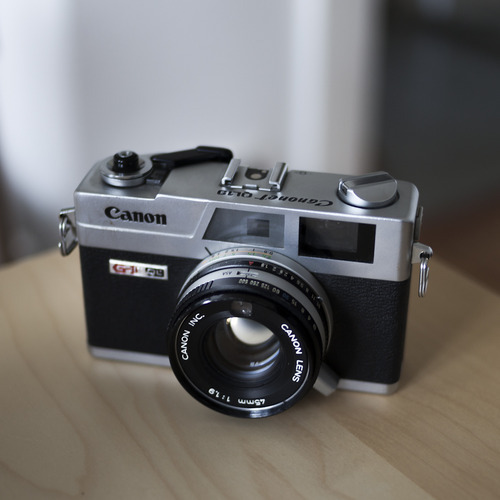
I started photgraphy back in 2005 with a EOS350D and used mostly digital cameras for quite some time. But after 2007 I got more and more interested in analog photography and so I used some old SLRs before I got my first rangefinder. I got this one cheap on ebay for about 40 EUR and never regretted the buy.
For those not familiar with camera technology geeky stuff: a rangefinder camera does not use a viewfinder that looks through the lens as SLR does but an extra viewfinder close to the lens. Different from a point and shoot cheap camera a rangefinder camera has a built in mechanism to find the distance to the object and focus on it. The rangefinder uses a technique similar to a stereoscopic device to find the range. By looking from 2 slightly different angles at an object the distance to it can be measured. This methode is easier than those of manual SLRs and works especially well in dim light, when most other systems, including full auto cameras, stop working. Another advantage is that the viewfinder isn’t blocked while the picture is taken. This is especially useful for reportage and street photography where you want to keep an eye on the scene while shooting. In the QL19 the rangefinder is rather green and a bit darker than those of a Leica. But it works well and is quite accurate.
What I like about the QL19 is its robustness and size. It is significantly smaller than my Leica and lighter, too. Of course, the lens is not as good as a nice voitländer lens, but it is better than most other lenses in small systems like this. The QL19 has a built in light meter and the film loading mechanism is the quickest and easiest I have ever seen for 35mm film. I don’t understand why this was never used again, even in later canon models. The AE1 for example is younger than the QL19 and is slower to load. You get an idea of it in the next picture.
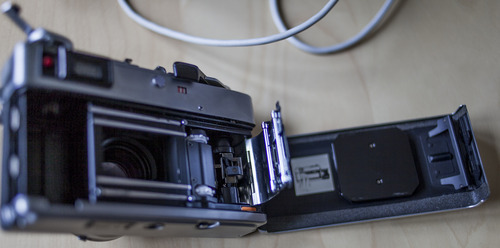
You just put the film under the metal tongue, close the camera and load the film. That’s it. No fiddling, no way the film can loosen and avoid transport, it simply works. I want to see this in more cameras.
Unlike the Leica rangefinder and most SLR the lens is fixed and can not be exchanged. Some might see this as a downside, but I enjoy the small package with a decent lens. The whole camera is not made to compete with bigger and better systems, as it costs only a fraction of their prize. I paid more than 10 times more for my used Leica M4, and it din’t have a lens included. The canonet cameras are the budget way into small rangefinder cameras and anyone interested in this should pick one up on ebay.
So. This saturday I was mentally occupied with setting up said Hackintosh, but I used the time when I had to get my hardware exchanged to take some pictures. Unfortunately only in Mitte/Friedrichstr, which isn’t such a nice area to shoot, but I had fun with this small camera. I used an old and expired Ilford HP5+, which resulted in heavy grain and not too many greyscales. I got dozens of this film for really cheap a long time ago and am now slowly using them up.
Today I developed the film in Ilfotec LC29 1:30. Here are some of the results.
More can be found on my flickr.
Next week I will talk about the Canon AE-1 Program, a classic full metal SLR with a 50/1.4.